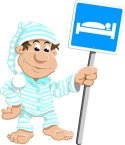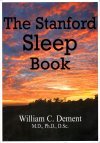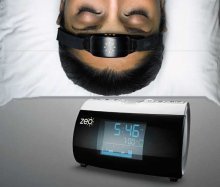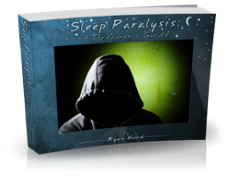
| Connect & Subscribe |
NREM Sleep
Written by Kevin Morton with adaptations from the Stanford Sleep Book
Table Of Contents

NREM sleep (also referred to as non-REM sleep) comprises around 75% of a typical night's sleep and is comprised of four different distinct stages. Each of these stages is discussed in more detail below, and you can also learn more about the stages of sleep here.
NREM sleep can be identified and quantified by brain wave patterns alone, as they are clearly different from those of both wakefulness and REM sleep with the exception of a little bit of ambiguity that sometimes occurs at sleep onset. Brain wave patterns are also what distinguish the four stages of NREM from each other, distinctions that you can see clearly in the graphs below.
The 4 Stages of NREM Sleep
As mentioned above, NREM has 4 stages of sleep, each with a distinct brain wave pattern. You can get a picture of how these stages transition and interact with each other and where they fit in the larger picture of a full night's sleep by checking out this graphic.
Stage 1
Stage 1 sleep is a transition period from wakefulness to the other 3 stages of non-REM sleep. It is of short duration, usually lasting only from 1 to 7 minutes. Stage 1 sleep is characterized by low voltage, mixed frequency EEG, as well as some slow, rolling eye movements and some relatively higher EMG activity. The brain activity is shown below in the following EEG recording.

Stage 2
Stage 2 makes up the bulk of an average person's sleep each night, around 40 to 45 percent. A sleep researcher can easily recognize stage 2 sleep because of the presence of sleep spindles and K-complexes in the EEG waves. A sleep spindle is a rapid wax and wane of the EEG waves in a 1 to 2 second interval, while a K-complex is a large wax and wane of the wave that somewhat resembles a mountain.

Stage 3
Stage 3 and stage 4 are similar and both fall into the category of slow wave sleep. They are so named because of the high amplitude waves in the EEG. In order to qualify as stage 3 sleep, these slow waves must be present in no more than 50 percent of the epoch. The waves are also referred to as delta waves.

Stage 4
Stage 4 is the other slow wave sleep period. In order to qualify as stage 4 sleep the high amplitude delta waves must be present in more than 50 percent of the epoch, like in the EEG recording below.

Parasomnias In NREM Sleep
Despite not getting the sort of glamour status REM receives in some of our minds, NREM sleep can still get pretty crazy and exciting. Case in point, many parasomnias, movement-involved sleep disorders that can be quite remarkable, arise out of the deep slow-wave stages 3 and 4 of NREM, as well as during transitions from one NREM stage to another.Parasomnias occuring often in deep NREM:
- Sleepwalking
- Sleep terrors
- Confusional arousals
Parasomnias occuring often during NREM transitions:
- Rhythmic Movement Disorder (RMD)
- Sleep talking
- Sleep starts
- Nocturnal leg cramps
To give NREM even more of a case for being a similarly spicy stage of sleep to REM, consider that parasomnias such as the ones above (namely sleepwalking) have led in the past to some of the most flabbergasting murder trials in history--murders being committed while the attackers were asleep. How does that happen?! You can read a bit about one of these trials here.
Similarities and Differences of REM and NREM Sleep
Differences:
The brain in NREM sleep appears to be much less active than in REM sleep. In addition, during REM sleep there is an outflow of motor commands from the brain to the spinal cord as the mind attempts to get the body to act out what it sees (the dream) that is not present during NREM sleep (REM atonia prevents most of these motor commands from ever moving the muscles--some turn into twitches and the like--but the brain's motor activity still remains a difference). However, this distinction doesn't hold up quite as well when we consider the various parasomniac activities that can happen in NREM sleep, such as sleepwalking, sleep terrors, and sleep talking, all of which require some substantial motor activity.
Clearly also, the rapid eye movements that are characteristic of REM sleep do not occur in non-rapid eye movement sleep ;-)
Similarities:
Perceptual disengagement, one of the defining qualities of sleep in general, holds true for both states--perception of the outer world is essentially absent from REM and NREM. Interestingly, environmental stimuli can enter a dream, but this is usually transformed and incorporated into the content of the dream (picture water drops on one's head manifesting as dream rain) and not considered to disrupt the qualifications for perceptual disengagement.
Arousal Threshold - While a sleeper is considerably easier to awaken in the lighter stages of NREM (stages 1 and 2, especially 1), the ease of awakening a sleeper in NREM deep sleep (stages 3 and 4) seems to be pretty comparable to waking him or her up in REM.
Does Dreaming Occur In NREM Sleep?
While REM sleep is clearly hyped up to be the stage of sleep where dreaming occurs, dreams are not unknown to happen in NREM sleep as well. NREM dreams are generally regarded as much less vivid as REM dreams, and may be better referred to as "dream imagery"--more colors and abstract shapes than the storybook-type dreams that the active REM mind constructs.
Is Either REM Sleep Or NREM Sleep More Restorative Than The Other?
The jury is still out on this one. While studies involving REM sleep deprivation have shown that the body can fall into REM sleep more quickly after being deprived from it for a time, suggesting that it is necessary for the body, there is no conclusive evidence as of yet as to whether either state is inherently more restorative.
You know about NREM Sleep, now break down the more overarching question of What Is Sleep?
And join the conversation with your own comments here:
blog comments powered by DisqusAbout This Site
Welcome! This site is continuously being created by students of Dr. William C. Dement's Sleep And Dreams course at Stanford University.
We made this site as a call to action for people all over the world to live healthier, happier, safer, and more productive lives by learning about their own sleep. We have faith that reading the information provided on this site will motivate you to be smart about your sleep deprivation and strategic about your alertness in order to live life to your fullest, most energetic potential.
In fact, we challenge you to do so! What do you say, are you up for the challenge?
Interviews With Sleep Specialists: Insights Into the Worlds of Sleep Medicine & Sleep Business
America's Most Dangerous Disorder: What Is Sleep Apnea Doing To Your Sleep?
Sleep Debt: How Much More Will You Achieve When You Reduce Yours?
The Stages Of Sleep: The Journey Through The Night
Delayed Sleep Phase: You Want To Sleep But You're Not Tired Yet
Paralyzed at Night: Is Sleep Paralysis Normal?
Sleep In Words: Smart, Strange, and Funny Quotes About Sleep
Sleep Disorders In Children: What's Keeping Your Child From A Full Night's Rest?
Attacks of Pavor Nocturnus (a.k.a. Sleep Terrors, Night Terrors, or Incubus Attacks)
The Stanford Sleep Book
Dr. Dement's pioneering textbook has been the core text for Sleep and Dreams since 1980, but it has just recently been made available to the wider public for the first time.
In it you'll find a more detailed account of the most important things you need to know about sleep, alertness, dreams, and sleep disorders. Studies, statistics, plus plenty of Dr. Dement's classic anecdotes painting the history of sleep medicine.
Preface | Intro | Contents | Get A Copy
More Sleep Resources
The Zeo
A revolution in personal sleep tracking, the Zeo is a wireless headband that transmits your brainwaves in realtime to a dock (pictured here) or your smartphone. The result? You can wake up and see exactly what stages of sleep you were in during the night! Unprecedented personalized sleep knowledge.
Sleep Paralysis: A Dreamer's Guide
Ever woken up paralyzed? A surprising number of us have, believe it or not. But few know the actual causes of this phenomenon, and fewer still how to exert control over it. Dream researcher and sleep paralysis expert Ryan Hurd shares breakthrough insights into how to do just that.
Important Disclaimer
Please Note:
The information found on this page and throughout this site is intended for general information purposes only. While it may prove useful and empowering, it is NOT intended as a substitute for the expertise and judgments of healthcare practitioners.
For more info, see our
Terms of Use.









